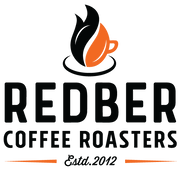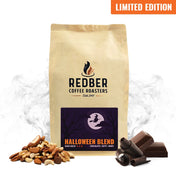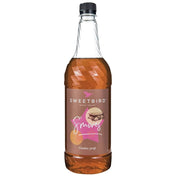What is Earl Grey Tea ?
Earl Grey tea is a flavoured tea and is therefore not its own category of tea. Flavoured teas include any type of tea; green, white, oolong and black or that has been flavoured with extracts, flowers, fruit pieces, spices, or artificial flavours.
Earl Grey is one of the most iconic and recognisable flavoured teas in the world. This quintessentially British, flavoured black tea is typically a black tea base flavoured with oil from the rind of bergamot orange, a citrus fruit with the appearance and flavour somewhere between an orange and a lemon with a little grapefruit and lime thrown in. Today’s cultivar of the bergamot orange is believed to be a hybrid of the bitter Seville orange native to the Mediterranean and a sweet lime/lemon native to Southeast Asia.
Earl Grey History:
So how did England and the rest of the world come to fall in love with this citrus and floral infused black tea?
Although Earl Grey tea was popularised by the English population, it was not an English invention. Many scented and flavoured teas are uniquely Chinese, as early Chinese tea masters constantly experimented with ways to make their teas more exotic, not only to capture the attention of the reigning emperors of the time but also the business of worldwide trade merchants looking to return home with the unique flavours of the Far East. From fragrant jasmine flowers and wild rosebuds to bitter oranges and sweet lychee fruits, Chinese tea masters infused all kinds of fragrance and flavour into their teas during processing to create distinctive and highly drinkable beverages.
One history of the origins of Earl Grey explains that a Chinese mandarin tea master blended the first Earl Grey tea as a gift for Charles Grey, the 2nd Earl of Grey and Prime Minister of the United Kingdom from 1830 to 1834. According to the Grey family, the tea master used bergamot as a flavouring to offset the lime flavour in the well water on Earl Grey’s estate, Howick Hall, near Newcastle, England. Earl Grey’s wife, Lady Grey, loved the tea so much that she entertained with it exclusively. It proved so popular with London society, she asked tea merchants in London to recreate it. Exactly which English tea merchant marketed the first Earl Grey tea blend is somewhat of a debate in the world of tea. But one thing is for sure: While the 2nd Earl of Grey abolished slavery and reformed child labour laws in England during his political leadership, he will be most famously remembered for the beloved tea he helped introduce to the world.
How Earl Grey is made:
A tea is flavoured or scented during manufacturing toward the end of the processing, usually once the tea leaves have dried. One-way teas are flavoured is by blending the finished tea with flowers, herbs, and spices so that the blended ingredients are visually appealing and lightly infuse the tea leaves with their aroma and flavour. Another way tea is flavoured is by spraying or coated the finished tea with extracts, essential oils, or flavouring agents during or after the drying process. This adds much a much stronger flavour to the tea and uses fewer ingredients. The flavouring-to-tea ratio is completely up to the tea manufacturer, and the flavours that come through to a brewed cup of flavoured tea will vary by brand.
Earl Grey is most widely defined as a black tea that has been flavoured with the oil of bergamot. There is no one way to make Earl Grey tea, however, which is why every Earl Grey tea you've ever tried has probably tasted slightly different.
Some of the most significant variables in how Earl Grey tea is made include:
Type of Tea used:
The classic Earl Grey tea is made with a base of black tea leaves. But the black tea used can be anything from Ceylon to Indian to African. It can be a single estate black tea or a blend of black teas from around the world. The black tea flavour can be sweet and floral or rich and malty. It depends completely on the terroir (the characteristics of the geography, climate, and culture) of the tea plant and the processing style of the tea master.
Type of Bergamot used:
Both synthetic and natural bergamot is used to flavour Earl Grey tea. Synthetic bergamot is popular with manufacturers because its flavour is consistent and it contains no actual citrus, so it is safe to consume for those with citrus allergies. The flavour of natural bergamot can vary immensely depending on where it was cultivated and how it was processed. Natural bergamot is often defined as a sharp and intensely citrus flavour. Calabria, in Southern Italy, is home to 80% of the commercially grown bergamot, followed by France and Turkey.
Amount of Begamot used:
The art and style of the tea master will define not only which type but also how much bergamot is used in a particular Earl Grey blend. Depending on the flavour of the base tea, a tea master may decide to use a subtle amount of bergamot flavour so as not to cover up the delicate flavour of the tea leaves. Or a tea master may decide to give a bold, sharp black tea a hefty kick of bergamot to stand up to the bold flavour profile of the tea leaves.
Black Tea Processing: Withering → Rolling → Oxidation → Firing
Black tea is rolled immediately after withering to help get the oxidation processes started quickly. The leaves are then fully oxidised before they are dried, which is how they get their dark colour and rich flavour.
Tasting Earl Grey:
There is something about the sweet, floral, sour, and bitter flavour profile of bergamot that blends perfectly with a bold, full-bodied, and malty black tea. For some, a flavoured black tea is more palatable to sip, hiding some of the astringent or bitter notes that may come through in the steeped tea leaves. For others, a flavoured tea is simply a more interesting, exotic, and fun way to explore a range of tea flavour profiles.
Redber stocks a range of Earl Grey Tea from the UK's finest tea suppliers. These suppliers use one of the finest oils of bergamot, so a mild citrus note hits gently on the centre of the palate and seamlessly melds into the satisfying, full-bodied maltiness of our organic black tea.
The unique flavour of Earl Grey is so beloved that it has lately leapt out of the teacup and into all kinds of culinary treats, from marshmallows to chocolate to cookies. Check out our Earl grey tea cake recipe, for some delicious afternoon tea inspiration!
Preparing Earl Grey:
If your Earl Grey has a black tea base, it can typically brew for longer periods of time and in hotter temperatures than flavoured teas with a green tea base. Generally, this is somewhere between 200 and 212 degrees. We steep our Birchall Earl Grey tea for 2 to 3 minutes.
If your Earl Grey tea came with specific recommendations for brewing, use those. But using about 2 grams of loose-leaf Earl Grey Tea per 8 oz. cup of water is a safe bet. Cover your Earl Grey tea while it steeps to keep all the heat in the steeping vessel.
- Avoid oversteeping your flavoured tea. The longer your tea steeps, the stronger the added flavour becomes and the more quickly the tea leaves will release any of their bitterness and astringency. Taste your tea after the recommended steeping time and then decide if you’d like it to steep a little longer.
- Many high-quality, loose leaf Earl Grey teas, like those we stock from Birchall, can be steeped multiple times to yield several cups of tea.
- Most Earl Grey teas are meant to stand up to milk and sugar per the popular English teatime traditions. But for a true education in the flavour differences between the many varieties of Earl Grey, try sipping it plain with no additives.
Shop our Earl Grey Tea's now:




Shop all Earl Grey Tea's
Sources:
Bergamot orange via Wikipedia
Earl Grey tea via Wikipedia
The Story of Tea: A Cultural History and Drinking Guide by Mary Lou Heiss and Robert J. Heiss
Teatulia.com




